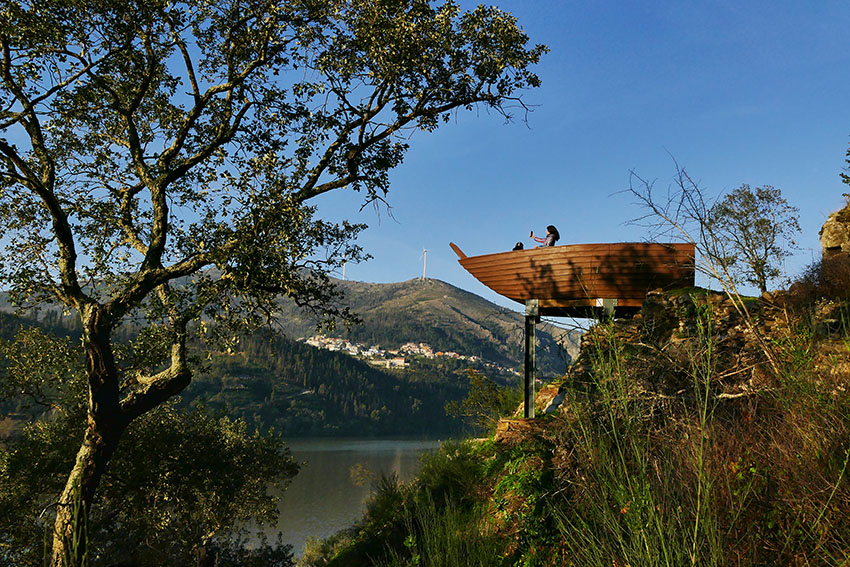A 14 km walkway that follows the banks of the River Douro as it flows through the municipality of Castelo de Paiva in Portugal’s Norte region, has been built under an EU-funded project. Observation points at strategic locations along the walkway give visitors unobstructed views of the river and the surrounding environment. They are designed in the shape of Rabelo boats – traditional wooden vessels used to transport people and goods along the Douro.
New scenic walkway on the banks of the River Douro, in Portugal
- 11 June 2020
The trail has a series of magnificent observation points that were extremely well made by the design team. These observation points are models of Rabelo boats which jut out over the river from the slopes of the Douro Valley. This allows visitors to get a fantastic view of the natural water mirror that is the River Douro.
The walkway is on the south bank of the Douro between its confluences with the Arda and Paiva rivers. Starting at the river beach of Choupal da Concas in Pedorido, it runs through the historic shale villages of Gondarém and Midões, before reaching Santa Maria de Sardoura.
Access points from adjacent roads – some of which provide parking – divide the route into smaller sections of at least 2 km so that visitors do not have to walk its full 14 km length. Information panels give details of the main features of the route, and safety notices have been installed.
Natural beauty
The walkway was built in stages. The first covered the 3 km between the Choupal da Concas river beach and Oliveira do Adra, passing a number of watermills and a luxury hotel in Fontaínhas. It showcases the natural beauty of the landscape around the Douro and the richness of its flora and fauna.
Extending outwards over the river from the slopes of the Douro Valley, the observation points are intended to give visitors the impression of sailing on the water.
Further aspects of the route include the cork trees, which provide shade, the typically Portuguese shale walls and the view across the Douro to the Serra da Boneca mountain. A trip along the walkway enables tourists to experience the customs and traditions of the riverside villages and the local gastronomy and wines, particularly Vinho Verde, one of the most famous products of the Douro Valley. Annual visitor numbers are expected to increase by some 90 000 thanks to the project.
A wider strategy
Development of the walkway is part of an integrated strategy called Viver Payva D’Ouro, which is aimed at turning Castelo de Paiva into an important tourist destination and boosting the local economy. By encouraging tourists to get to know the area’s natural, cultural and gastronomic heritage, Viver Payva Douro is designed to ensure that they return for subsequent visits.
Enhancement of the leisure area next to the Choupal da Concas beach is another part of Viver Payva D’Ouro. This should complement the walkway by emphasising the scenic beauty and biodiversity of the mouth of the Arda. The work involves landscaping of green spaces and establishing support services.
Additional elements of the strategy include upgrades to riverside quays in Midões, Santa Maria de Sardoura and Fornos, creation of a footpath along the Paiva and themed routes covering mountains, vineyards, fossils and mines.
The walkway itself complements existing local attractions such as boat trips along the Douro and train rides through the Alto Douro Wine Region – a UNESCO World Heritage Site.
Total investment and EU funding
Total investment for the project “Payva D’Ouro Trails” is EUR 399 326, with the EU’s European Regional Development Fund contributing EUR 296 927 through the “Norte 2020” Operational Programme for the 2014-2020 programming period. The investment falls under the priority “Low-carbon economy”.

